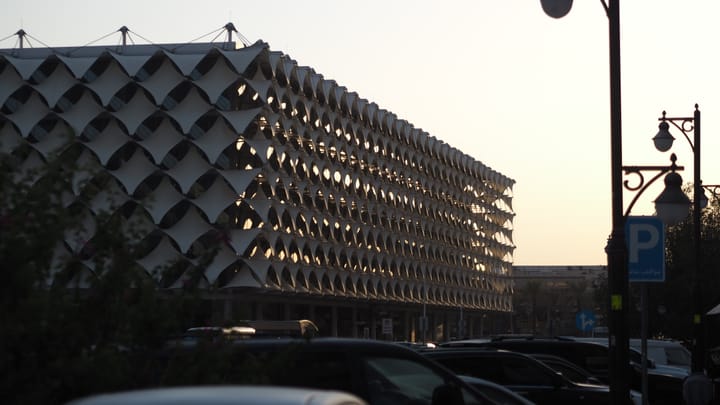disembarking the blue line at the station designated and dedicated to the National Library I circumnavigated the building looking for an opening, a revolving door, a be-thobed figure approached, and, on the strength of Jo's experience of being asked for academic credentials to become a library member, I


